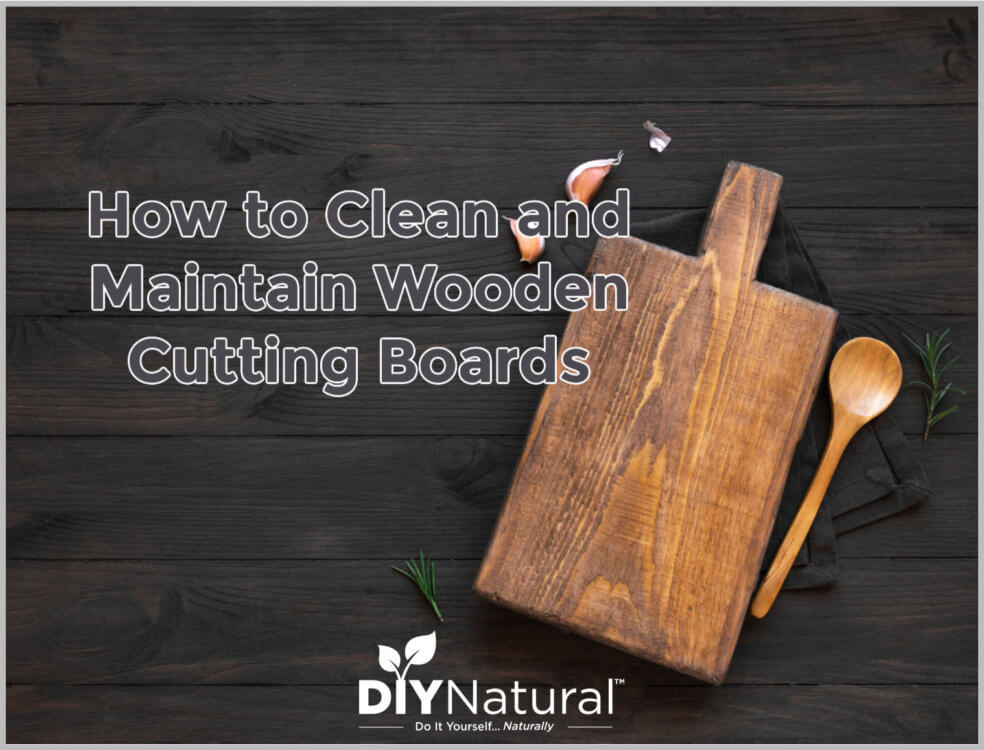

Every home cook needs to know how to clean and maintain a wooden cutting board. We show you how, including making your own cutting board oil.
I love my wooden cutting boards. I have one that’s maple, another that’s bamboo, and one I made in high school that’s walnut and cherry, I think. It’s been a long time! Most of my cutting boards are newer, but even the old ones still hold up. I don’t use them for cutting meat, just veggies. And although I wash them off, every so often they need a thorough cleaning and an application of cutting board oil.
How to Clean a Wooden Cutting Board
Most wood cutting boards don’t have a protective coating like varnish. Good thing, too. I wouldn’t want that chipping off and getting in my salad. But that means that liquids can soak in. I don’t worry too much about celery or tomatoes, but onions? And garlic? I don’t want that odor to show up every time I use my cutting board. So I clean mine about once a month. And before we learn how to make and apply cutting board oil, we need to make sure our cutting boards are clean.
Lemon and Kosher Salt
First, I squeeze a lemon over the top of the board. Then, I dip the rind in kosher salt. I like the coarser grains in kosher salt as opposed to the finer grains of regular table salt. Then, take the salted rind and scrub the board. Scrub really well, redipping the rind in the salt if necessary.
Rinse and Dry Thoroughly
After you get the board all scrubbed down, rinse it off well. You don’t want the salt to settle and dry out on the board. When you have the board all rinsed off, set it outside in the sun to dry. One, it will dry out the board completely, and two, the sun can help with the disinfecting process. When your board is completely dry, then you’re ready to apply the cutting board oil recipe below.
-
Heat the oil to the point at which the beeswax melts.
-
When it is totally melted, let cool just a bit and then pour into a jar. I use a wide-mouth 8-ounce Mason jar so I can either dip my fingers into it or rub a rag on it.
READ RELATED: How To Make Grape Juice at Home From Scratch
-
Let cool all the way and then place the lid on the top and tighten well. Condensation and then mold can occur if the rub is even a little warm.
Other oils will work with this rub, but avocado oil has preservative properties and is very slow to become rancid. And you may need to adjust the amount of beeswax. Some are very hard while some are very soft. You can melt this rub down again and add more wax or more oil depending on the consistency that you want. It should be roughly like petroleum jelly.
Using Your Cutting Board Oil
To use your mixture, scoop out about a teaspoon and rub it all over the cutting board. Buff it in well and wipe off the excess. Take a clean rag and buff it even more. When it is done, there shouldn’t be any oil remaining. Depending on the size of your cutting board, you may need a little more or less of the mixture.
Other Useful Tips
This cutting board oil also works really well for wooden and bamboo spoons and spatulas. I used it on one of my grandmother’s old spoons and except for the burn marks (character, right?!), it looked mostly new.
Now you should learn how to knit your own dishcloth!
Now you know how to clean your cutting board and make a cutting board oil to bring it back to life!
*******
Source: DIY Natural – Food

Leave a Reply